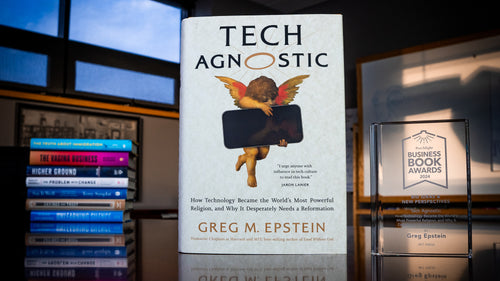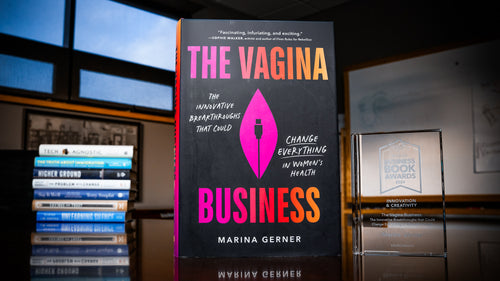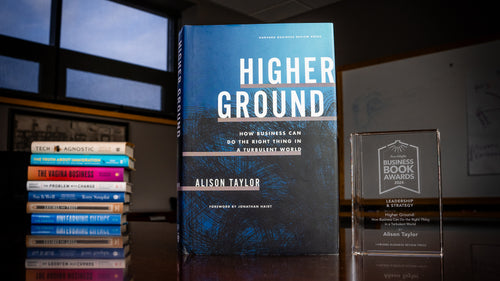An Excerpt from The Unlocked Leader
 The most effective leaders are “human leaders:” leading with empathy, vulnerability, and authenticity. But many still adhere to the outdated myth that leaders must be “superhero leaders: infallible, unflappable, and fearless." Tragically, their innate ability to inspire remains locked within, blunting their impact.
The most effective leaders are “human leaders:” leading with empathy, vulnerability, and authenticity. But many still adhere to the outdated myth that leaders must be “superhero leaders: infallible, unflappable, and fearless." Tragically, their innate ability to inspire remains locked within, blunting their impact.
In The Unlocked Leader veteran executive leadership coach Hortense le Gentil combines real life stories, rigorous research, and practical tools to explain how superhero leaders can become effective human leaders. You’ll discover:
- How to identify the mental obstacles that stand between you and leadership authenticity, and sap your energy and impact - your mindtraps.
- How to confront your fears and escape those traps by operating a mindshift.
- Practical strategies to better connect with yourself and others - a mindbuild.
The journey from superhero leader to human leader not only transforms the lives of leaders themselves—both at work and beyond. It also makes a profound and lasting difference in the lives of people around them and the organizations they lead. This is how human leaders make an impact and shine their light in the world: by changing the way they connect with themselves and other people, they start a chain reaction that reverberates throughout their organizations and beyond them, because we are all part of interconnected networks of human relationships.
An indispensable leadership manual for people who wish to lead not just with their heads, but with their heart and soul as well, The Unlocked Leader belongs on the bookshelves of leaders and aspiring leaders at all levels looking for a fresh new perspective on effective, powerful leadership in service of something bigger than themselves.
The following excerpt comes from the book's Introduction.
◊◊◊◊◊
The Sum of All Fears
When thinking about human leadership, many executives who spent their careers striving to be superhero leaders feel like the ground under their feet is no longer solid. “I was educated and trained to never show my feelings and vulnerability at work,” one CEO recently told me. “Now you’re telling me I have to? This is a real revolution.”
Their fear typically manifests in three ways:
· The fear of connecting with their own emotions. For rational leaders used to flexing their analytical side, looking deep within themselves can feel intimidating, even dangerous. What are they going to find? Self-exploration might upset the applecart. Even more frightening, exposing their true selves might change how others see them. What if they appear weak? What if they lose control, authority, respect, and love?
Frank, the CEO of a very successful startup, reminded me of Forrest Gump, who in the movie of the same name kept running for no particular reason. Frank was working nonstop, juggling multiple projects and flying from meeting to meeting without taking a minute to reflect. At the same time, he struggled to properly communicate his ideas and to inspire his team, which left him frustrated and feeling alone. “Where are you running to?” I asked him. He didn’t know. What he was running from soon became clear, however: he was afraid to look at his own emotions. A few months earlier, a close friend had died very suddenly. Frank was not only devastated, he also felt guilty—guilty that he was still alive, and guilty that he had not done more for his friend. So, he had to run, run, run to try to escape these difficult feelings.
· The fear of chaos. Many leaders believe that if everyone starts relating to their colleagues on a more personal level, it might unleash a tsunami of group hugs and kumbayas, which will detract from actual work. “Emotions do not belong in the office,” one senior executive told me. How will they steer the ship if their role is no longer to fix all problems? What will happen when they let go of control? That thought leaves many of my clients feeling like trapeze artists without a safety net.
During the worst of the COVID-19 pandemic, for instance, Bruce, a senior executive in a multinational company, was afraid that making space for emotions might open an uncontrollable floodgate of tears and grief. Where would it stop, he wondered, and what good would it do? Emotions would take over, bring everyone down, and undermine the work they all had to do. He also feared that if he stopped fixing problems himself, and instead focused on supporting people and bringing them together so they could find their own solutions, the business would unravel. Someone on his team aptly described him as a soccer coach who kept running on the pitch to play the ball.
· The fear of failing. Many leaders feel they don’t know how to handle emotions at work—their own or others’. “What if someone on my team tells me they’ve just lost a parent or a spouse to COVID?,” a client asked me. “Or if someone starts crying? I have no idea what to do or what to say!” Effectively leading with heart and soul takes skills and approaches leaders used to wielding their logic and analytical brain power may not have mastered yet. Even worse, these leaders who are used to success fear they could fail spectacularly. “I’ve been successful leading the old way,” an executive told me. “I like the idea of becoming this new type of leader, but can I be as successful?” To many of us, the fear of failing is an old companion. Who has never felt a knot in the pit of their stomach before an important exam? Or when taking on new responsibilities at work?
Raise your hand if any of these fears—fear of connecting with our own emotions, fear of chaos, fear of failing—sound familiar!
Where do these fears come from? And how can we change in spite of them?
Although much is being said about why cultivating empathy and being a human leader is a good idea, very little is on offer when it comes to how. This leaves many leaders locked in their old approach.
How to Become a Human Leader
This dearth of “how-to” reminds me of a dream I had many years ago. I dreamed of my grandmother, who had died years earlier. “Go walk on the path of roses!” she told me.
The path of roses? I had no idea what she was talking about, but it sounded nice. My grandmother used to love roses, which she grew in her garden with great care and affection. From her perspective, a path of roses could only mean a sacred road to fulfillment, beauty, and happiness.
“Where is it?” I asked her in my dream.
“You already know where it is,” she replied, smiling. “Now go!”
Then I woke up, furious and anxious.
Back then, I was feeling stuck. My life was filled with people who believed that to be successful, they were supposed to be superhero leaders. After years working in advertising and communications, I felt like I would have to fit into that leadership mold for my career to progress. That mold did not feel like me, but I feared I would fail if I veered from the successful and familiar path I was on, even though it was not working for me. Where was the exit? How could I find that “path of roses”? Although my dream suggested I already knew what to do and where to go, I didn’t have the faintest idea.
Yet once I overcame my fear of change, I became an entrepreneur, leading teams of engineers in a sector I knew nothing about. There was no technical expertise I could contribute. So I was free to focus my energy on articulating an inspiring vision, as well as on motivating, supporting, and creating an environment in which everyone could deploy their unique talents, learn and grow, and become the best version of themselves. I finally felt at home.
Finding my own path to a different kind of leadership convinced me to help others find theirs.
So how can you become an effective human leader?
This is what this book is about. It offers a road map to your own path of roses. I have developed this road map based on my own journey, as well as my exploration of neuroscience, psychology, and spirituality, and years of coaching successful executives and entrepreneurs to become even more effective by leading differently.
Although this book focuses on leadership at work, each of us is a complete individual, not a sum of separate, isolated parts. As such, the process presented in this book applies to all areas of your life. The journey from superhero leader to human leader is one of deep inner transformation, because genuine and authentic empathy comes from within. It isn’t about applying a few tricks and parroting the right words, which comes across as neither genuine nor authentic. To be able to profoundly understand and connect with others, we must first understand and connect with who we are and step into the fuller, truer version of ourselves.
Excerpted with permission from the publisher, Wiley, from The Unlocked Leader: Dare to Free Your Own Voice, Lead with Empathy, and Shine Your Light in the World by Hortense Le Gentil with Caroline Lambert. Copyright © 2024 by H2 Consulting Group, LLC. All rights reserved. This book is available wherever books and eBooks are sold.



